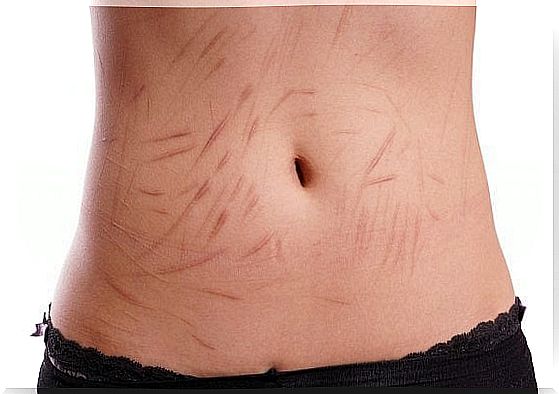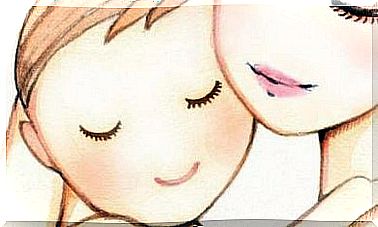Self-Mutilation In Teens: What’s Hiding Behind It?

If your child has frequent cuts, bruises, burns or injuries, pay attention. Self-harm in teenagers is a way of screaming for help.
Technically, this behavior is called non-suicidal self-harm. Until very recently, the Diagnostic and Statistical Manual of Mental Disorders (DSM) considered it as a symptom more associated with some mental disorder.
Nowadays, when its symptoms are already treated separately, it starts to be alarming how the incidence of this problem has increased. Over the past 30 years, cases have multiplied around the world.
The age at which self-harm in adolescents begins is between 12 and 16 years of age. Furthermore, it appears that up to 63% of young people continue to do this after one year. These data make it clear that there is a large population of young people trapped in this behavior.
Girls often opt for injuries where blood can be seen, such as scrapes or cuts. Meanwhile, boys are often treated for bruises and burns.
The most curious thing is that, although women are more prone to this behavior, the difference in relation to men has diminished considerably.
In a study carried out by the Department of Clinical Psychology and Health at the University of Madrid, it was concluded that 22% of European adolescents have already self-mutilated without suicidal intention at least once in their lives. Furthermore, they also came to the conclusion that 8% of them do it recurrently.
Self-Mutilation in Teens: Why Do They Do It?
To be clear, we could say that self-mutilation is a type of drug, an anxiolytic that is more powerful than any other on the market. For young people, this “helps” to regulate their emotions.
When fear, anger and sadness recur and young people do not know how to deal with these feelings, they prefer to provoke physical pain that makes them forget about emotional pain. It is an avoidance mechanism, through which you release tension and lessen these negative feelings.

It is necessary to clarify that these actions are not impulsive at all, quite the contrary. They plan, hope to be alone, and enjoy their little ritual of knives, cigarettes, and sharp objects.
As with other addictions, young people experience a false sense of peace immediately after self-harm. It’s as if they’ve been given a dose of some immediate-acting drug. The problem arises when, minutes later, anxiety returns, added to the feeling of guilt.
While it’s true that none of them want to commit suicide, it’s important to make it clear that this behavior multiplies the chances of trying it in the future. Therefore, parental intervention is more than necessary in these cases.
Do you have a solution?
Self-mutilation in adolescents is a disorder that requires psychological treatment, this is a fact. Young people must understand that self-harm does not solve anything. On the contrary, it brings more problems to their lives.
We must know what this behavior is hiding – depression, anxiety, eating disorders – and where they come from. That’s the only way I can stand up to them.
In many therapies, efforts are focused on teaching other emotion regulation techniques, which can range from intense physical exercise to ice-water baths, or even letting young people scream and hit pillows.
There are organizations, such as the International Society of Self-Mutilation that has a presence in 7 countries, that help and guide these cases through therapies and resources, both for patients and for family members.
It is necessary to understand that self-mutilation in adolescents is a strong warning. Asking why they’re doing this will only increase your anxiety. Young people need all your understanding and empathy.
A fashion with many followers
This self-sabotage has become a fad with a name of its own: cutting . You can even find tips on the internet on how to do this. On Instagram, the photos and videos of young people proudly flaunting their wounds have no censorship filter, they are available to anyone who wants to see them.

Many of these young people do it for fun. What they’re looking for is to get a little more adrenaline and complete the ultimate viral challenge with a hashtag in the middle.
However, we must not minimize any warning signs. Although most do not have any personality disorder, these young people do have problems with low self-esteem, inability to live healthy relationships and poor emotional intelligence.
The impact of self-harm on teenagers is so great that, recently, a major television network launched the series Sharp Objects , starring Amy Adams, in which this issue is explicitly addressed.
Both this type of resource and the indispensable help of a professional can help you to solve this problem together with your child.









